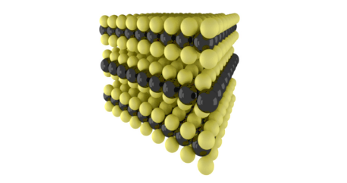Some phonons wander by mistake, into the mess where symmetry breaks: Understanding low thermal conductivity by first-principles calculations
D. Lindroth
Licentiate Thesis
(2016)
Download PDF

Energy management is arguably one of the most defining challenges for modern societies. An ever increasing demand for energy has to be balanced with the requirement for a sustainable energy economy that minimizes the human impact on the environment. Materials and their ability to transport both electrical and thermal currents play a key role in this area as they are essential components in energy extraction, transport, storage, and consumption technologies. On a microscopic level electrical and thermal transport in materials is governed by its chemical composition as well as the specific arrangement of the constituent atoms. Since relatively small differences in this regard can have a dramatic impact on the macroscopic behavior of a material, a detailed understanding of the underlying processes and couplings is essential for materials development and optimization.
In this thesis the thermal conductivity in two classes of materials of current and future technological importance has been investigated using electronic structure calculations (density functional theory) in combination with methods from statistical physics (Boltzmann transport theory). The first two papers included in this thesis deal with so-called van der Waals solids, layered materials that are currently attracting tremendous attention in the scientific community due their exciting combination of electrical, optical, and thermal properties. The present thesis specifically provides predictions and a detailed analysis of the lattice thermal conductivity in Mo and W-based transition metal dichalcogenides. A model is developed to explain the extreme structure sensitivity of the conductivity and calculations are presented that elucidate chemical trends and establish bounds.
The third paper deals with clathrates, inclusion compounds that have been found to exhibit a combination of transport properties that is very well suited for thermoelectric applications. These materials exhibit extremely small thermal conductivities, which in the present thesis are shown to be caused by a combination of mass effects and very efficient phonon-phonon scattering processes that limit the heat carrying phonon modes to a very small fraction of the total Brillouin zone.
The present thesis provides a stepping stone for future investigations of transport processes in van der Waals solids and clathrates, which eventually should lead to the development of devices with higher energy efficiency and better materials for energy extraction technologies.


